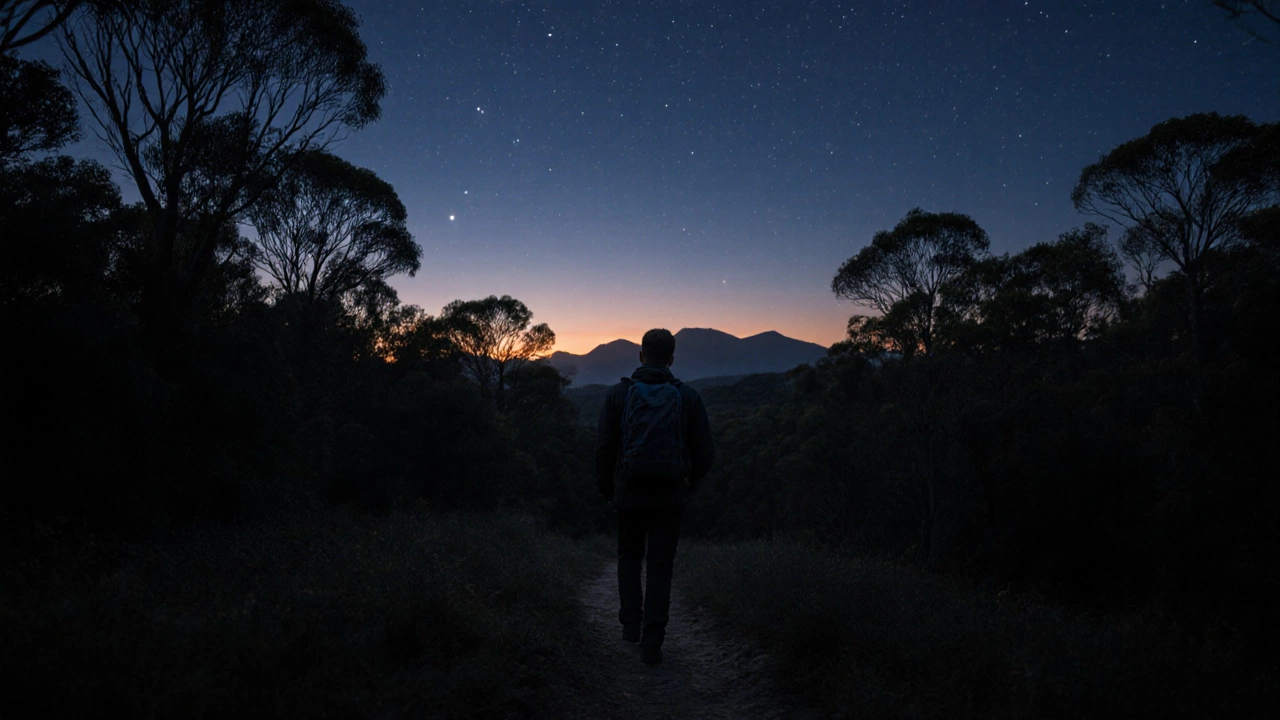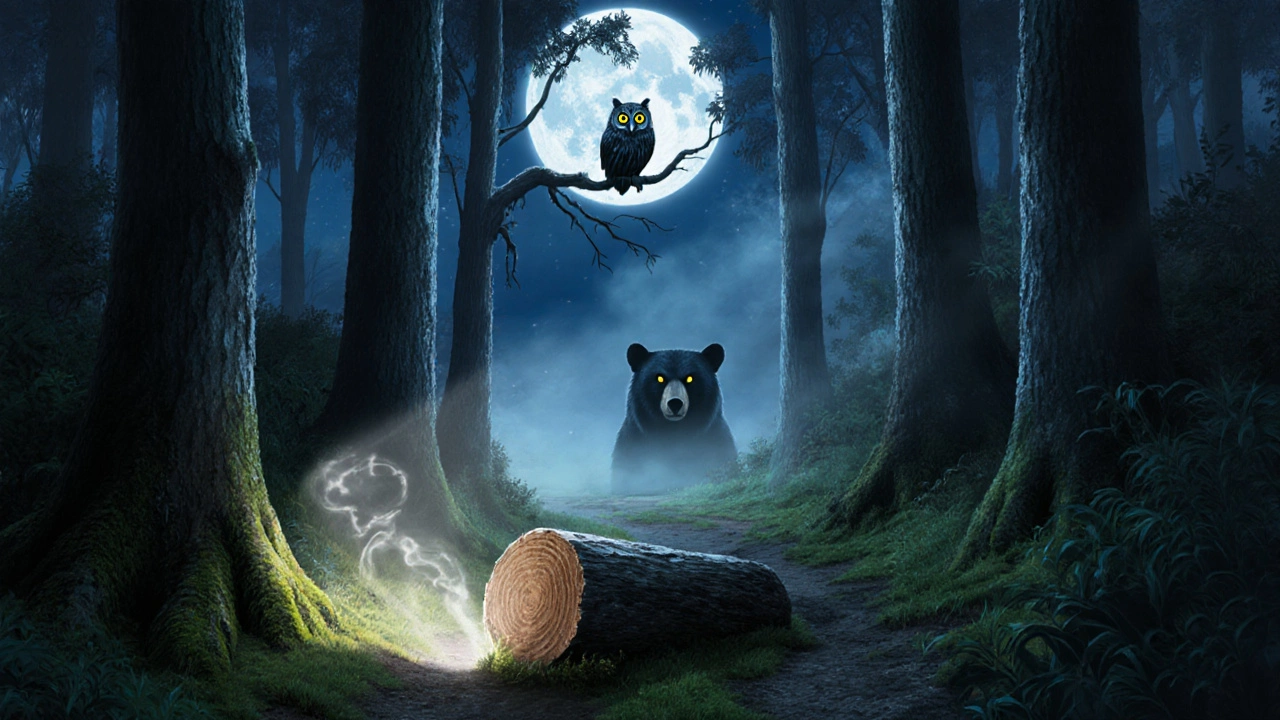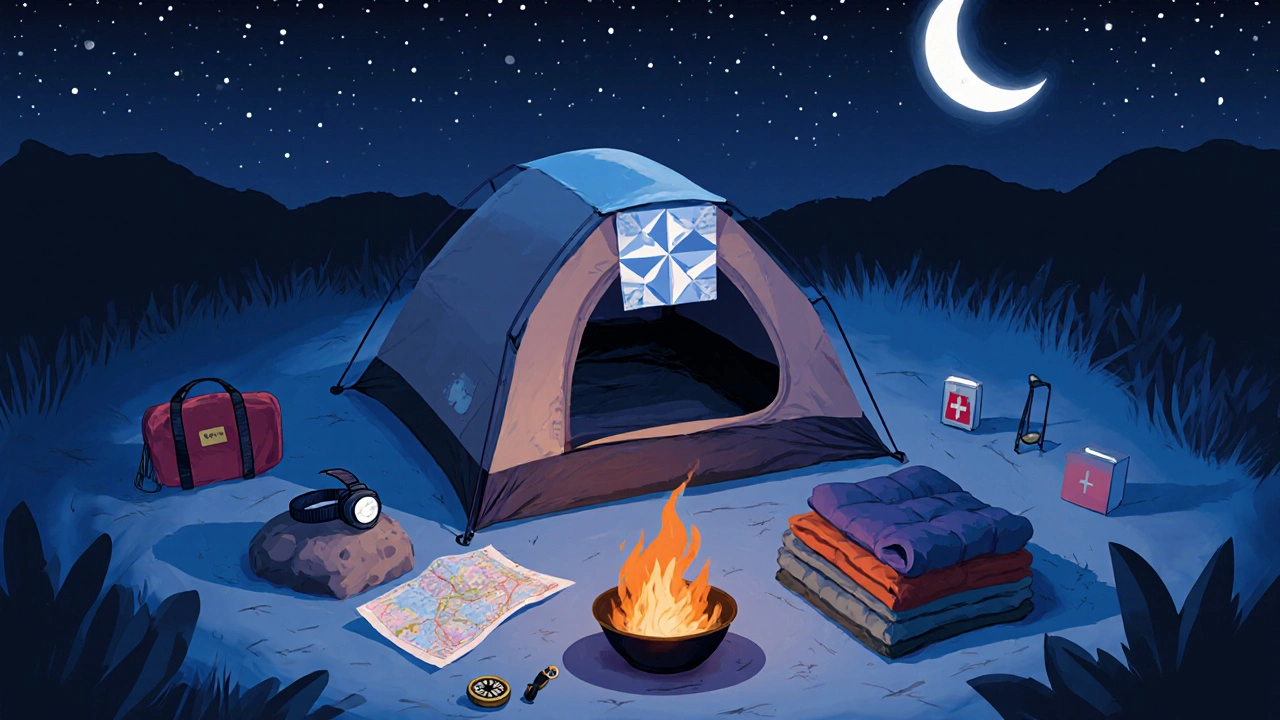Nighttime Forest Safety: Why You Shouldn't Enter Woods After Dark
 Oct, 26 2025
Oct, 26 2025
Nighttime Forest Safety Calculator
Preparedness Assessment
Ever felt the urge to wander into the forest after the sun sets, thinking the stars will guide you? Most campers quickly learn that night brings a whole new set of challenges. nighttime forest safety isn’t just a buzzword-it’s the difference between a memorable adventure and a dangerous ordeal. Below we break down why the dark woods can turn from tranquil to treacherous and give you a solid game plan to stay safe.
Key Takeaways
- Visibility drops dramatically, making navigation and hazard detection difficult.
- Nocturnal wildlife are more active and less predictable.
- Temperature swings can cause hypothermia faster than during the day.
- Proper gear-headlamp, map, compass-reduces risk dramatically.
- A clear plan and emergency kit are essential before stepping into the woods at night.
Why the Dark Makes the Forest Riskier
When the sun disappears, Night is the period of reduced natural light that fundamentally changes the forest environment. Human eyes rely on daylight for depth perception; at night, our vision relies on rod cells, which detect motion but not detail. This means a fallen log or a slick patch of moss can become an invisible trap. Moreover, ambient temperature often drops 10-20 °C after dusk, especially in the Australian bush, accelerating the risk of hypothermia if you’re unprepared.
Nocturnal Wildlife Encounters
The forest’s animal kingdom flips its schedule after dark. Species like Bears are large omnivores that become more active at night searching for food, while Owls are nocturnal birds of prey that hunt using keen hearing silently glide overhead. Even smaller critters-opossums, foxes, and snakes-move about, increasing the chance of surprising encounters. A startled animal can charge, bite, or flee, potentially injuring a camper who’s not expecting it.
Navigation Challenges in the Dark
Daylight lets you follow landmarks-a distinct tree, a clear stream, a rocky outcrop. At night, those cues fade. While a headlamp illuminates a narrow path, its beam doesn’t reach far enough to spot a distant turn. Relying solely on intuition often leads to circles or dead‑ends. Map and compass are navigation tools that work independently of light sources become indispensable. GPS devices can fail due to signal loss beneath dense canopy, so mastering traditional navigation is still the safest bet.

Temperature and Weather Fluctuations
Even in October, the Australian southern forests can experience sudden cold fronts. A night breeze can lower the perceived temperature by several degrees, especially if you’re wet from a river crossing. Hypothermia is a condition where body temperature drops below 35 °C, impairing physical and mental function can set in quickly if you lack adequate insulation. Layered clothing, a reliable sleeping pad, and a waterproof tarp are essential safeguards.
Safety Precautions Before You Head Out
- Tell someone your route and expected return time.
- Carry a headlamp portable light source with adjustable beam and extra batteries.
- Pack a compact first‑aid kit includes bandages, antiseptic, and emergency medication.
- Bring a map and compass for reliable navigation without reliance on electronics.
- Dress in moisture‑wicking base layers, insulating middle layers, and a wind‑proof outer shell.
- Set up a visible campsite marker-bright tarp or reflective tape-to help rescuers locate you.
What to Do If You Get Lost
If you realize you’re off‑track, stay calm. Panic lowers your ability to think straight and can waste precious energy. First, turn on your headlamp and conduct a systematic scan: look for recognizable terrain features like water sources or ridge lines. If you have a compass, orient yourself toward known cardinal points. If you’re still unsure, follow a stream downstream; water often leads to a road or a larger trail. As a last resort, set up a temporary shelter, conserve heat, and signal for help using a whistle or flashing light.

Day vs Night Risks: Quick Comparison
| Factor | Day | Night |
|---|---|---|
| Visibility | Clear, depth perception good | Reduced, reliance on artificial light |
| Wildlife activity | Mostly diurnal species | Increase in nocturnal predators |
| Navigation aids | Landmarks easy to spot | Compass and map crucial |
| Temperature | Generally warmer | Rapid cooling, risk of hypothermia |
| Rescue response | Quicker locate | Delays due to darkness |
Checklist Before a Nighttime Forest Trip
- Map of the area (paper copy) and a calibrated compass.
- Headlamp with at least 200 lumens and spare batteries.
- Layered clothing suitable for 5‑15 °C night temperatures.
- Waterproof shelter (tent or tarp) and insulated sleeping pad.
- First‑aid kit, whistle, and multi‑tool.
- Emergency food rations (high‑energy bars).
- Plan shared with a friend, including exit points.
- Leave a written note of route and expected return time at home.
Frequently Asked Questions
Can I rely solely on a flashlight instead of a headlamp?
A headlamp keeps both hands free and provides a wider, more even beam, which is far safer for moving through uneven terrain. Flashlights are useful for signaling but should be a backup, not the primary light source.
What wildlife should I be most concerned about at night?
In Australian forests, nocturnal mammals like possums, foxes, and especially Bears (on the mainland, think about larger marsupials such as wombats that can be aggressive) are the main risk. Keep food sealed and store it away from your sleeping area.
How can I avoid getting lost if GPS fails?
Rely on a paper topographic map and a compass. Learn to read contour lines, follow watercourses downstream, and always note cardinal directions at landmarks.
Is it safe to set up a fire at night?
Only if the campsite allows it and you have a cleared fire pit. Night winds can spread embers, so keep a bucket of water nearby and fully extinguish the fire before sleeping.
What are signs of early hypothermia?
Shivering, numbness in fingers and toes, slurred speech, and loss of coordination. If you notice these, add layers, increase activity, and consume warm fluids immediately.